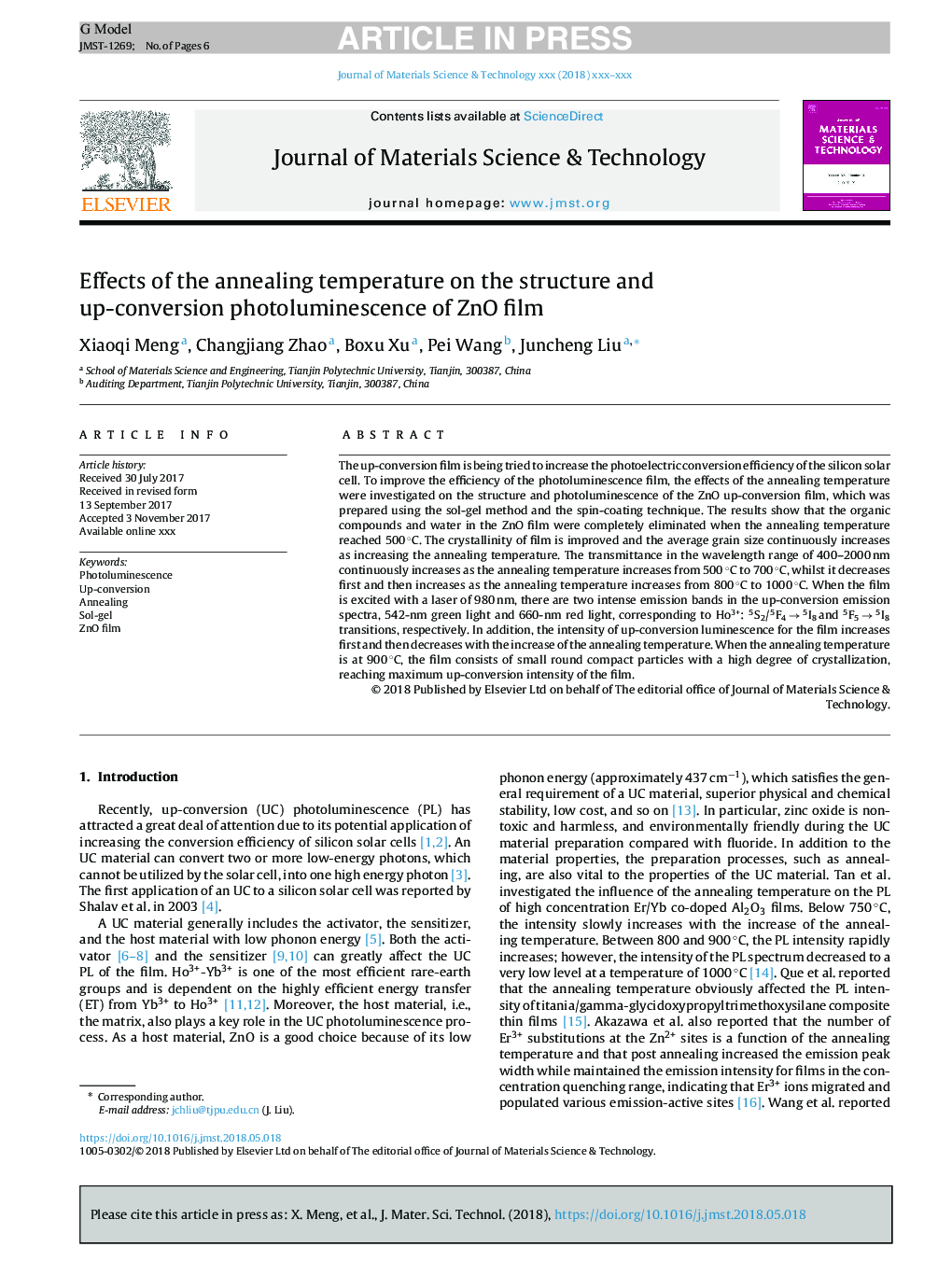| Article ID | Journal | Published Year | Pages | File Type |
|---|---|---|---|---|
| 8955409 | Journal of Materials Science & Technology | 2018 | 6 Pages |
Abstract
The up-conversion film is being tried to increase the photoelectric conversion efficiency of the silicon solar cell. To improve the efficiency of the photoluminescence film, the effects of the annealing temperature were investigated on the structure and photoluminescence of the ZnO up-conversion film, which was prepared using the sol-gel method and the spin-coating technique. The results show that the organic compounds and water in the ZnO film were completely eliminated when the annealing temperature reached 500â¯Â°C. The crystallinity of film is improved and the average grain size continuously increases as increasing the annealing temperature. The transmittance in the wavelength range of 400-2000â¯nm continuously increases as the annealing temperature increases from 500â¯Â°C to 700â¯Â°C, whilst it decreases first and then increases as the annealing temperature increases from 800â¯Â°C to 1000â¯Â°C. When the film is excited with a laser of 980â¯nm, there are two intense emission bands in the up-conversion emission spectra, 542-nm green light and 660-nm red light, corresponding to Ho3+: 5S2/5F4â¯ââ¯5I8â¯and 5F5â¯ââ¯5I8 transitions, respectively. In addition, the intensity of up-conversion luminescence for the film increases first and then decreases with the increase of the annealing temperature. When the annealing temperature is at 900â¯Â°C, the film consists of small round compact particles with a high degree of crystallization, reaching maximum up-conversion intensity of the film.
Related Topics
Physical Sciences and Engineering
Materials Science
Materials Chemistry
Authors
Xiaoqi Meng, Changjiang Zhao, Boxu Xu, Pei Wang, Juncheng Liu,
